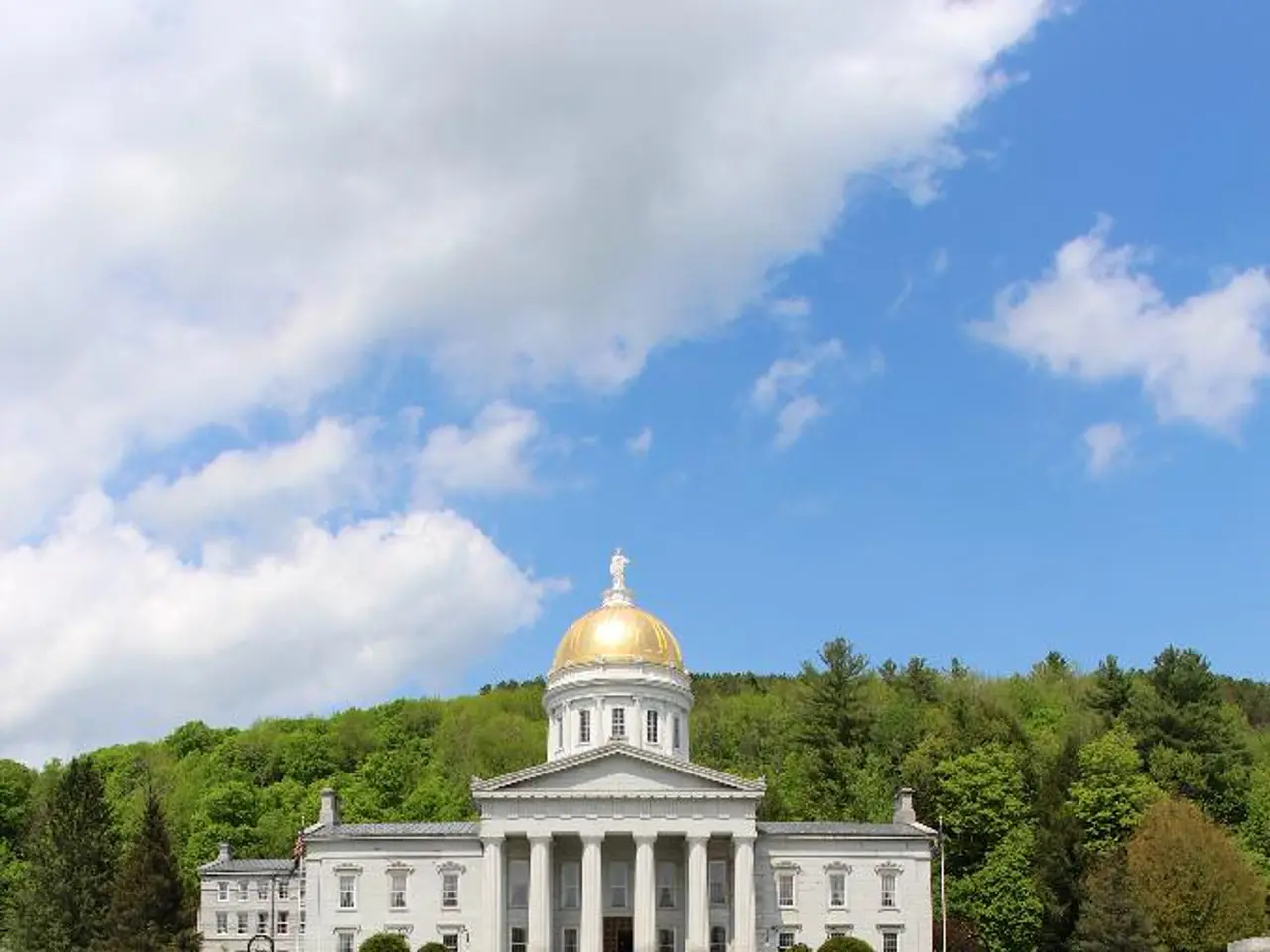Extravagant Trump's Gold-Coated Banquet Hall: A $200-Million Replica of Versailles, Shining a Light on Power and Wealth
Matthew McIntosh, published on 08.05.2025 under a Creative Commons Attribution-NonCommercial-NoDerivatives 4.0 International license, delves into the controversial $200 million Golden Ballroom addition to the White House complex.
The proposed 90,000-square-foot classical-style event space, set to replace the current East Wing, is intended for state functions, high-level diplomacy, and symbolic unity. With a seating capacity of 650, it will boast retractable walls, concealed media booths, and state-of-the-art acoustics.
Architecturally, the ballroom is inspired by the grandeur of European palaces, particularly the Hall of Mirrors at Versailles, reflecting President Donald Trump's image as a builder with a keen eye for detail. This addition, the largest architectural addition to the White House since the Truman reconstruction, aims to enhance the White House's capacity for official events.
However, the project has sparked debate. Some view it as an expansion of presidential representation and ceremonial capabilities, while others see it as an exercise in personal vanity disguised as national legacy. The scale and expense, funded partly by federal discretionary infrastructure funds, could symbolize an intertwining of personal and presidential legacy.
Critics argue that the project is a calculated political performance, designed to recast the presidency in an aura of imperial nostalgia. The design includes gold leaf ceilings, Versailles-style parquet floors, and a centerpiece mural titled "The Triumph of Liberty." At least $70 million for the ballroom is expected to come from funds originally allocated for "civic architectural revitalization," a phrase that has drawn scrutiny from watchdog groups and policy analysts.
The ballroom has quickly become a symbol, representing the American Dream rendered in marble and gold to some, and a gilded cage to others. It is a statement that projects a majestic vision of the presidency, with potential impacts on public and diplomatic perceptions of American executive power and hospitality traditions.
As the construction is set to begin in September 2025, the deeper question remains unanswered: what does this space say about us? Not just about a single administration or its aesthetic preferences, but about the broader drift of the American political imagination.
Senate Minority Leader Chuck Schumer (D-N.Y.) has criticized the project, stating it is "cutting things from you, and giving it not to some place that needed it, giving it to the big shots who run the show, Donald Trump at the top of the list."
On the other hand, supporters argue that government should not shy away from building beauty. They cite examples like the WPA murals of the 1930s, the Kennedy Center, and the Capitol dome, emphasizing the importance of aesthetics in national symbolism.
The ballroom addition is also seen as a campaign totem, with implications for the 2026 midterms and 2028 presidential cycle. As the project progresses, it will be interesting to observe how the American public and political landscape respond to this grand statement of power and opulence.
- The ongoing debate about the $200 million Golden Ballroom addition to the White House complex extends beyond its architecture, delving into policy and legislation.
- War-and-conflicts, crime-and-justice, and general-news outlets have covered the controversy surrounding the project.
- Car-accidents, fires, sports, and weather news, however, remain unaffected by this Presidential endeavor.
- The proposed addition, a classical-style event space modeled after European palaces, aims to further enhance the White House's ceremonial capacities.
- With a seating capacity of 650, the Golden Ballroom will boast retractable walls, concealed media booths, and state-of-the-art acoustics.
- Critics view the project as an exercise in personal vanity disguised as national legacy, borne of federal discretionary infrastructure funds.
- Some believe the ballroom's design, including gold leaf ceilings, Versailles-style parquet floors, and a centerpiece mural, signifies an intertwining of personal and presidential legacy.
- Supporters argue that government should invest in aesthetics, citing examples like the WPA murals of the 1930s and the Kennedy Center.
- Politicians and policy analysts have expressed concern about funding intended for "civic architectural revitalization" being redirected towards the ballroom project.
- The power dynamics behind the project have spurred debate within the American political landscape, with Senate Minority Leader Chuck Schumer criticizing it as a perk for the privileged.
- Despite the criticism, the ballroom's proponents argue that it projects a majestic vision of the presidency, potentially influencing public and diplomatic perceptions of American executive power.
- With the project set to begin in September 2025, the impact on the 2026 midterms and 2028 presidential cycle remains uncertain.
- As the ballroom becomes a symbol of the American Dream or a gilded cage, the deeper question remains unanswered: what does this space say about the broader American political imagination?
- In the realm of sports, the NFL, MLB, NBA, NHL, soccer, tennis, basketball (NCAAB), and mixed-martial-arts are unaffected by the ballroom addition.
- Horse-racing, grand-prix, and auto-racing, on the other hand, may witness spectators and VIPs gracing the Golden Ballroom for high-profile events.
- Weather-forecasting and sports-analysis experts may find interest in the impact of the ballroom on White House diplomatic functions and receptions.
- Whether the Golden Ballroom will be perceived as an embodiment of national pride or a symbol of excess remains to be seen, adding a unique layer to the ongoing narrative of American politics.






